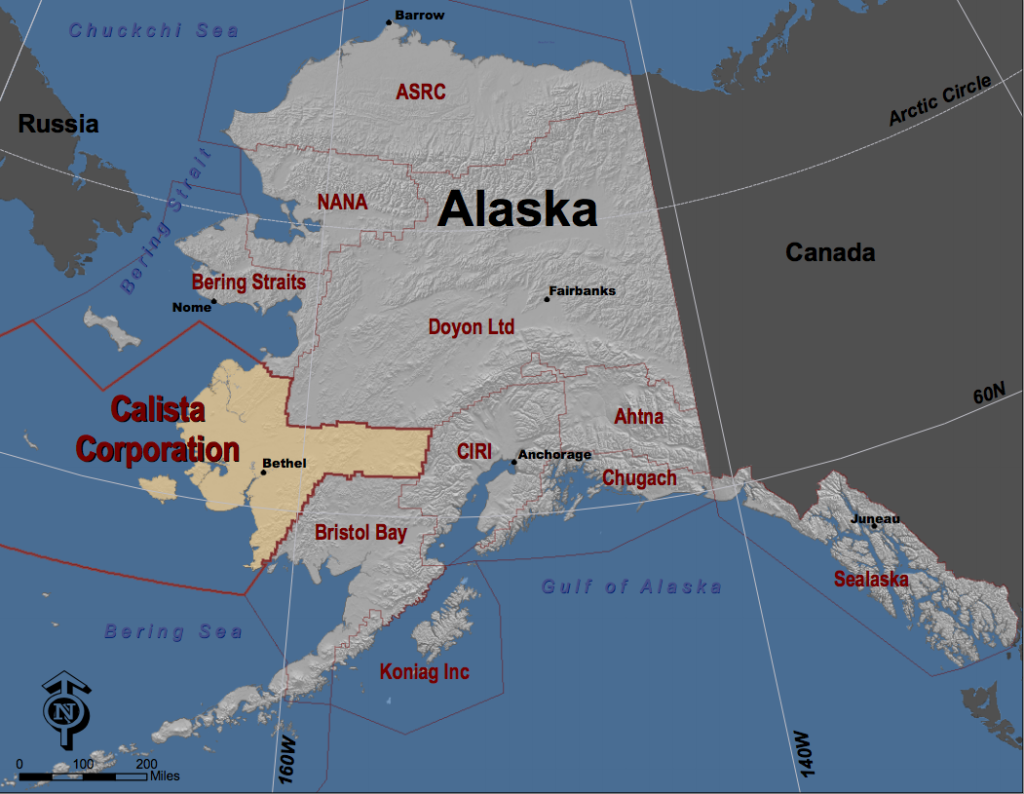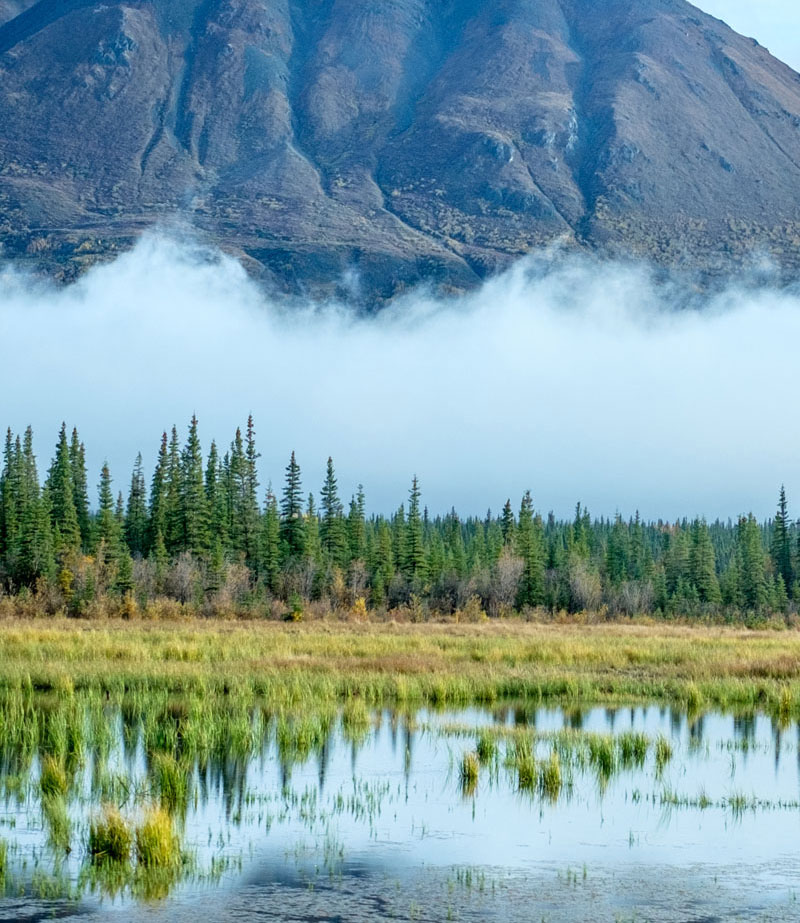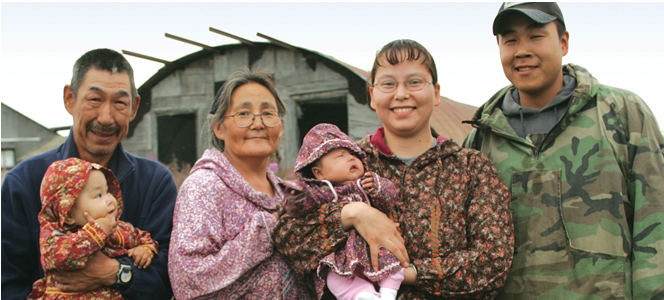
The region Calista Corporation serves is a vast and beautiful corner of the world. Tucked between two of Southwest Alaska’s mightiest rivers – the Yukon and the Kuskokwim – this unique isolated area is the traditional home of the state’s indigenous Yup’ik, Cup’ik and Athabascan people, our Shareholders.
The Calista Region encompasses 57,000 square miles and is the second largest Alaska Native Claims Settlement Act region in land size. The land entitlement to Calista, however, is only 6.5 million acres – less than 20 percent of the land area.
Approximately 75 percent of the land within the Region is owned by the Fish and Wildlife Service. Most of the remaining lands are owned by federal and state governments, with a very small amount privately owned. Surrounded by mostly federally owned lands, the Region is about the size of New York State. It encompasses nearly 10 percent of Alaska’s land area and is comprised of 56 federally recognized tribes. There are no roads that connect it with the rest of Alaska. Because everything must be flown or barged to each community, the cost of food, fuel, transportation and energy are extraordinarily high. Calista Corporation works hard and partners with many to improve and enrich the way of life for our Shareholders and Descendants.
Our History

The year 1741 marks the beginning of contact between Western society and the indigenous peoples of Alaska. Over the next 100 years there were numerous voyages to “Russian America” before Alaska was sold to the United States in 1867.
In 1971, the landmark Alaska Native Claims Settlement Act (ANCSA) was signed, addressing the issue of Alaska Native land rights. ANCSA created 13 regional corporations and over 230 village corporations, which were established to receive money and manage lands on behalf of their Shareholders. ANCSA required that in order for Alaska Natives to receive benefits from the settlement, they needed to enroll by submitting an application to the Bureau of Indian Affairs (BIA). The BIA then assigned which regional corporation an applicant would be enrolled in.
Our Cultures

The Yup’ik, Cup’ik and Athabascan cultures of the Calista Region are the most untouched in Alaska. The majority of the residents within the Region still speak their traditional languages, and most still practice a subsistence lifestyle and it is a primary characteristic of their economy. It is also a cherished way of life, vital to the survival of Alaska Native cultures.
Calista’s vision statement clearly states the importance of linking our distinct past to a successful future. We believe that with strong corporate and village leadership, we can achieve regional unity and improve the quality of life of those we serve.











